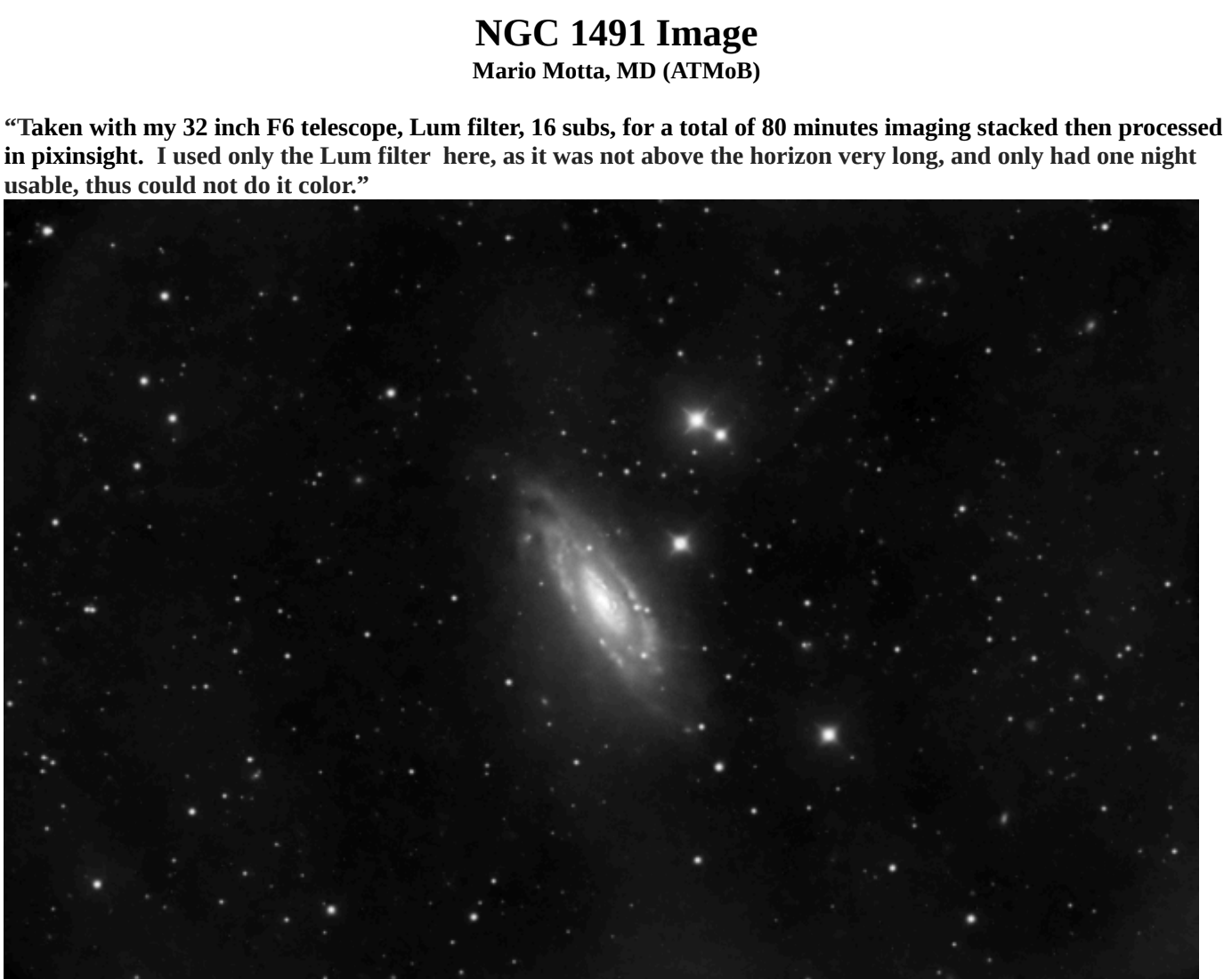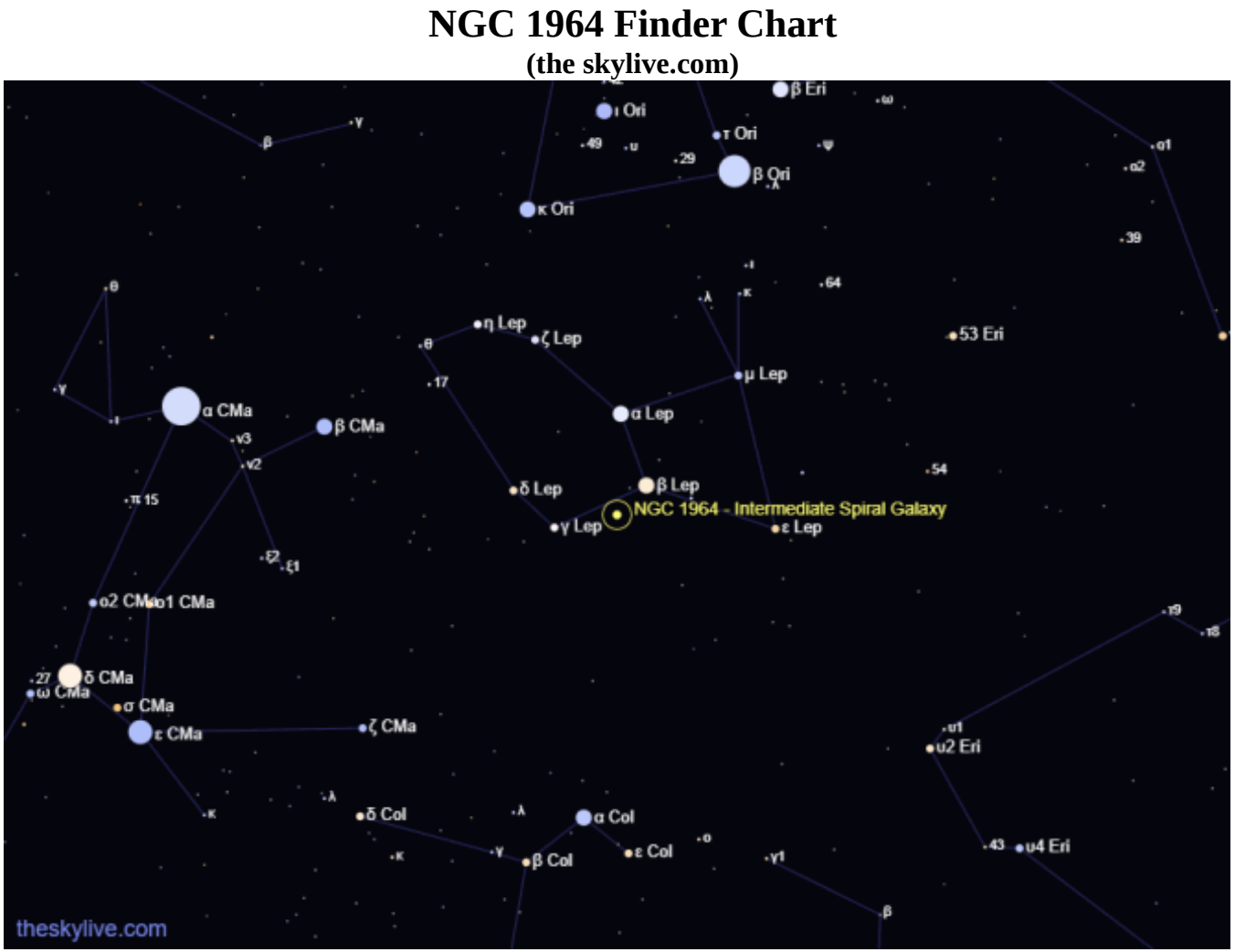by Glenn Chaple
NGC1964 – Spiral Galaxy in Lepus (Magnitude 10.8; Size 5.6’ X 1.8’ [photographic], 1.6’ X 0.6’ [visual]).
 This month’s Observer’s Challenge takes us below the celestial equator to the constellation Lepus and the spiral galaxy NGC1964. Discovered by William Herschel on November 20, 1784, it bears the Herschel Catalog identification H214, his 21st Class 4 (Planetary Nebulae) entry. He described it as “Very small, stellar, very bright nucleus and very faint chevelure not quite central.” “Chevelure” in Herschel-speak was the hazy glow surrounding a comet or star, which explains why he misclassified it as planetary nebula.
This month’s Observer’s Challenge takes us below the celestial equator to the constellation Lepus and the spiral galaxy NGC1964. Discovered by William Herschel on November 20, 1784, it bears the Herschel Catalog identification H214, his 21st Class 4 (Planetary Nebulae) entry. He described it as “Very small, stellar, very bright nucleus and very faint chevelure not quite central.” “Chevelure” in Herschel-speak was the hazy glow surrounding a comet or star, which explains why he misclassified it as planetary nebula.
NGC1964 is located at the 2000.0 coordinates RA 5h33m 21.8s and DEC -21o56’43”, about 11⁄2 degrees southeast of the 3rd magnitude star beta (β) Leporis. This southerly location means that NGC1964 transits the sky low above the southern horizon when viewed from mid-northern latitudes. The resulting atmospheric extinction dims the galaxy more than if it were at a higher altitude.
 NGC1964 might be considered to be two galaxies in one. Visual observers will see the oval- shaped glow of its nucleus which spans some 1.6 by 0.6 arc-minutes while imagers will capture that, plus the surrounding spiral arms which increase the galaxy’s overall size to 5.6 by 1.8 arc-minutes. NGC 1964 has been glimpsed with apertures as small as 4 inches from rural dark-sky locations, but twice that aperture is recommended for suburban sites.
NGC1964 might be considered to be two galaxies in one. Visual observers will see the oval- shaped glow of its nucleus which spans some 1.6 by 0.6 arc-minutes while imagers will capture that, plus the surrounding spiral arms which increase the galaxy’s overall size to 5.6 by 1.8 arc-minutes. NGC 1964 has been glimpsed with apertures as small as 4 inches from rural dark-sky locations, but twice that aperture is recommended for suburban sites.
Most sources cite a distance to NGC1964 of 65 to 70 million light years. An inhabitant of a planet in that galaxy and equipped with highly advanced optical equipment would be able to view the earth around the time of the extinction of the dinosaurs. With a diameter of around 100,000 light years, NGC1964 is approximately the same size as our Milky Way.
